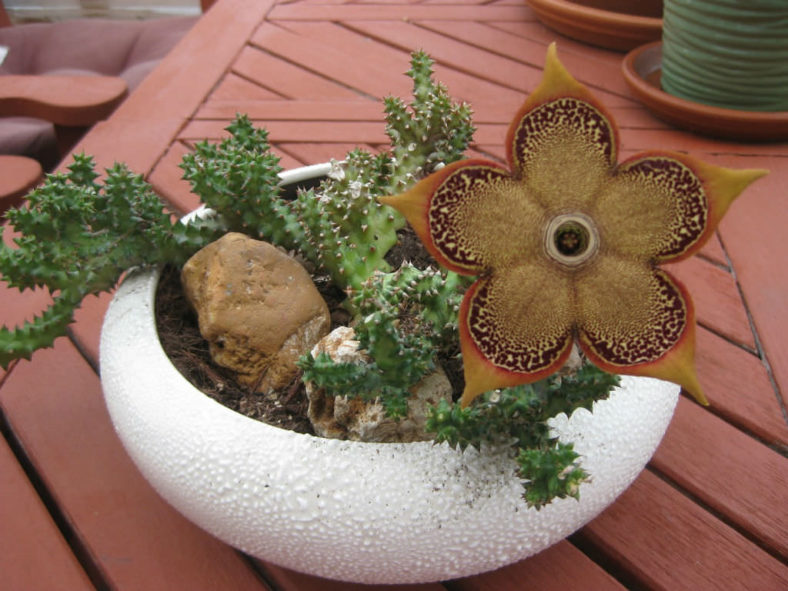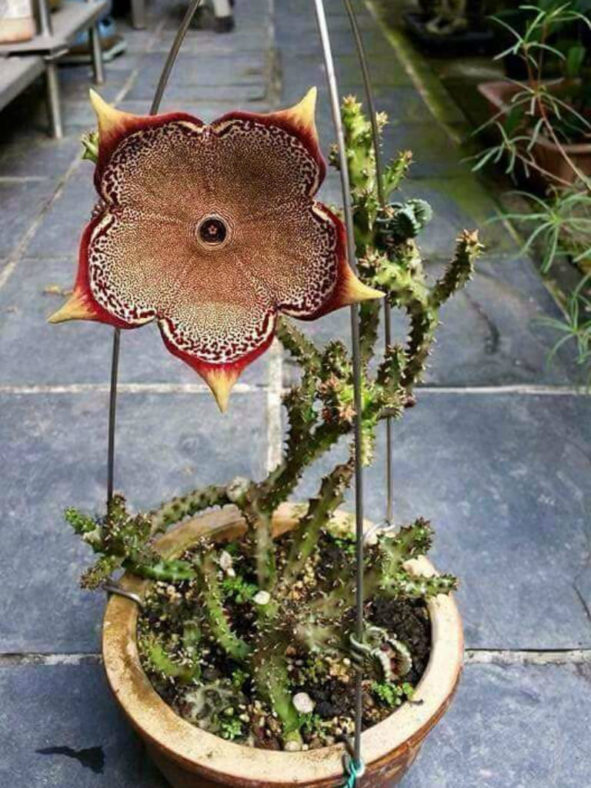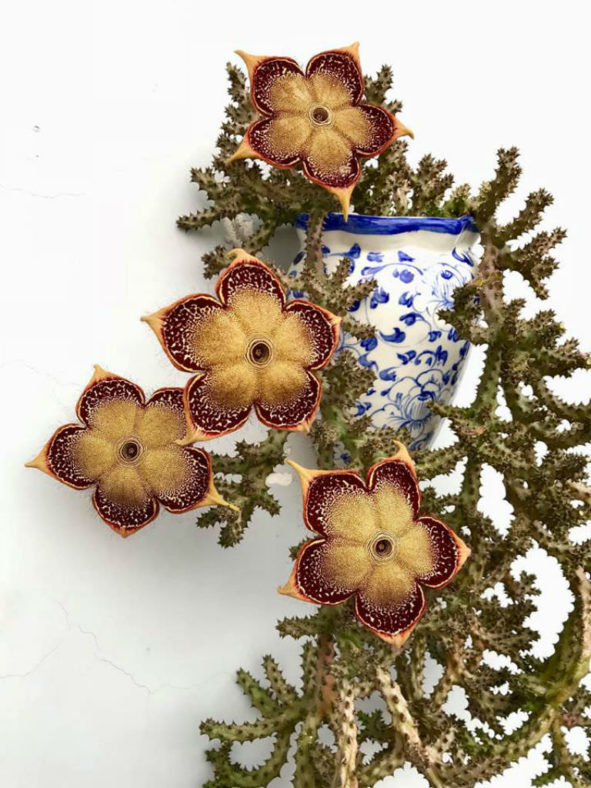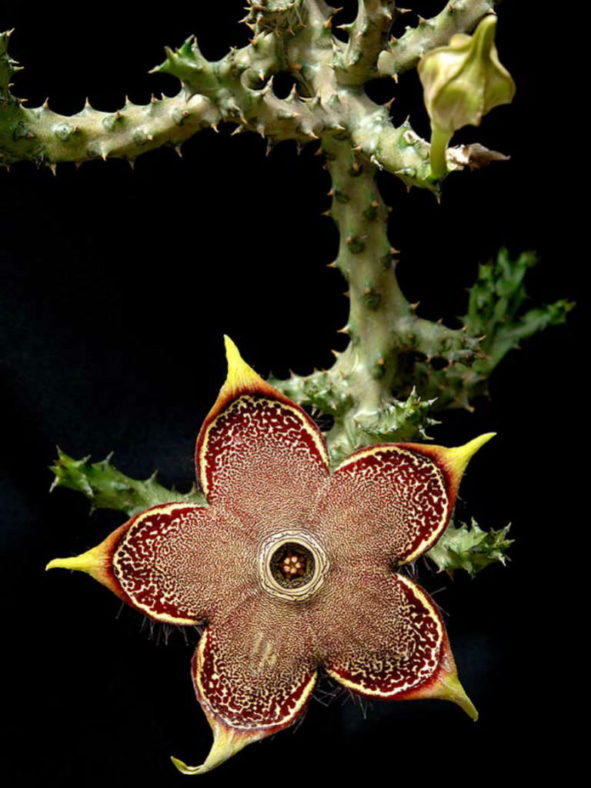Scientific Name
Edithcolea grandis N. E. Br.
Common Name(s)
Persian Carpet Flower
Synonym(s)
Edithcolea sordida
Scientific Classification
Family: Apocynaceae
Subfamily: Asclepiadoideae
Tribe: Ceropegieae
Subtribe: Stapeliinae
Genus: Edithcolea
Etymology
The specific epithet "grandis" (pronounced "GRAN-dees") means "full-grown, grown up; large, great, grand; aged, old" and refers to the large flowers of this species.
Origin
Edithcolea grandis is native to Africa (Djibouti, Ethiopia, Somalia, Kenya, Tanzania) and Asia (Yemen).
Description
Edithcolea grandis is a succulent plant with leafless, richly branched stems and attractive, pale yellow flowers with red-brown spots. The stems are decumbent, 4- or 5-angled, sharp-toothed, and range from grey-green to red with brownish spots. They can grow up to 12 inches (30 cm) long and 1.6 inches (4 cm) in diameter.
The bisexual, hairy-margined flowers, which can reach a diameter of 5 inches (12.5 cm), appear at the end of the shoots. The numerous winged seeds are encased in twin seed horns (follicles).

How to Grow and Care for Edithcolea grandis
Hardiness: USDA hardiness zones 10b to 11b: from 35°F (1.7°C) to 50°F (10°C).
Persian Carpet Flower is occasionally cultivated as an ornamental in desert gardens worldwide. However, it has gained a reputation as a challenging plant to keep alive due to its specific growing needs, which include ample light and relatively high winter temperatures above 60°F (15°C).
This plant requires moderate watering throughout the growing season but thrives with ample water and fertilizer in hot weather, which encourages it to flower freely. Allow the soil to dry out before watering again. Water sparingly in winter, according to the temperature.
Since roots are quite shallow, use a succulent mix or add extra perlite or pumice to regular potting soil. A gritty, free-draining compost is suitable, and using clay pots helps the plants dry out between waterings.
Repot every 2 to 3 years in spring, well before the first new growth emerges.
Propagation by stem cuttings is the easiest method used. Allow cuttings to dry for a day before planting. Stems must be laid (not buried) on gritty compost, and then they will root from the underside. It can also be grown from seeds. The seeds should be sown in spring in moist, sandy peat moss.
This plant is susceptible to root rot at low temperatures and mealybugs, which may damage it and initiate fungal attacks. However, if you have problems with stem or basal rotting, you can reliably isolate the healthy parts, dry them off, and reroot them in moist compost.
Uses
The stem of the Persian Carpet Flower is eaten as a vegetable in Ethiopia and Somalia.
Links
- Back to genus Edithcolea
- Succupedia: Browse succulents by Scientific Name, Common Name, Genus, Family, USDA Hardiness Zone, Origin, or cacti by Genus
Photo Gallery
Click on a photo to see a larger version.


